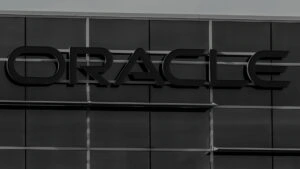Sensitive personal or company data is increasingly ending up in the dark corners of the internet, where it can be exploited by hackers. Dark Web Monitoring offers IT managers an early warning system for data leaks and helps them to detect data breaches in good time and take countermeasures.
Advancing digitalization and the introduction of cloud computing offer companies numerous advantages: The online storage of data enables optimized work processes, flexible and cross-team working and cost savings by eliminating the need for expensive physical infrastructures. However, this development also harbors risks. Sensitive company data can more easily fall into the hands of hackers and be misused.
It is not uncommon for stolen data to end up on the darknet – a small, hidden part of the internet. To minimize the impact of such data breaches, it is crucial for companies to take proactive countermeasures. In addition to secure data encryption and regular backups, this also includes dark web monitoring.
What is Dark Web Monitoring for?
Dark web monitoring is the search for and monitoring of information on the dark web. In contrast to the surface web, which is accessible to everyone and indexed by search engines, the dark web remains invisible to conventional search engines. Access is via special technical means such as the Tor browser. Communication on the dark web is encrypted, allowing individuals to hide their IP addresses. This serves both to protect privacy and to anonymize illegal activities.
Dark web monitoring tools continuously scan dark web pages for stolen company data such as employee data, passwords, bank details and other sensitive information. If such data is identified, IT managers can react quickly and initiate countermeasures before the data leaks are exploited and financial damage or loss of reputation occurs. For example, they can make the necessary password changes, block bank accounts as a precaution and inform all affected stakeholders at an early stage.
In addition, dark web monitoring offers the opportunity to monitor illegal activities on the dark web in general. By analyzing dark web platforms and forums, companies receive valuable information about potential attack vectors and can thus stay one step ahead of cyber criminals. The insights gained enable them to continuously adapt their cybersecurity strategy to the evolving threat landscape. For example, new phishing and defamation campaigns, new types of malware offered for sale, fake company websites(typosquatting) or URL hijacking can be detected and appropriate countermeasures taken.
How does Dark Web Monitoring work?
Dark Web Monitoring is based on specialized software that enables comprehensive monitoring of the dark web through the use of proprietary algorithms, real neural networks and threat intelligence built up over years. This threat intelligence is based on various sources, including hash values from end devices and deception technologies. The dark web monitoring tools specifically search relevant areas of the dark web where information is traded and sold in order to detect company-related data. This allows companies to subscribe to a kind of “feed” of threat data without having to hire an expert to manually search, compile and analyze this data.
Dark web monitoring services are offered by various providers today, including many open source intelligence (OSINT) tools. As sophisticated, AI-supported threat intelligence is particularly important for the risk assessment of potentially compromised assets, companies should pay particular attention to the service’s holistic approach and the provider’s many years of experience when selecting dark web monitoring software.
However, due to the anonymity and multiple layers of encryption of the dark web, this tool has certain limitations. Although dark web monitoring tools provide information about suspicious activities, they are not able to prevent the misuse of stolen information from the dark web or remove it completely.
What to do if data has been published on the dark web?
Should a data leak nevertheless occur, it is crucial to act quickly in order to minimize the impact as much as possible.
If information appears on the dark web that points to vulnerabilities, attack plans or stolen company data, the dark web monitor sounds the alarm at an early stage.
Incident response experts support teams before, during and after a security incident to quickly detect, investigate, contain and restore secure operations.
Here are some steps that IT managers should take immediately in this case
- Notify all affected parties:
As soon as the dark web monitoring tool reports that sensitive company data has been published on the dark web, CISOs should ensure that all relevant employees, departments and, if necessary, external experts and consultants are informed of the situation. The company’s affected customers should also be warned in good time in order to minimize any potential loss of reputation. - Monitor unauthorized changes:
The rapid detection of signs of compromise is crucial to protect company data. IT managers should therefore be on the lookout for suspicious activity that indicates a possible data breach. This includes unusual purchases and suspicious messages or emails to customers or employees. - Check and rectify vulnerabilities:
After a data breach, the first step is to identify and rectify the cause. IT managers should therefore carry out security tests and assessments of their company applications, networks and third-party website policies to identify potential vulnerabilities. The results of these tests will show what targeted measures need to be taken to close the security gaps. - Ensuring the security of backups:
To protect company data from loss or destruction, IT managers should check whether their organization’s data backup strategy is sufficient. This includes ensuring that multiple backups are created, at least one of which is stored securely at an external location. - Sharpen security measures with MFA:
After a thorough root cause analysis and damage assessment, IT managers should optimize their security infrastructure and practices accordingly to prevent future data leaks. This includes, for example, the introduction of multi-factor authentication (MFA) for all compatible applications and systems. MFA significantly increases security by making it more difficult for attackers to access corporate accounts, even if passwords have been compromised.
Dark web monitoring as part of a comprehensive security concept
Dark web monitoring is an indispensable building block in a comprehensive security concept, but it cannot eliminate cyber risks on its own. The tools serve as an early warning system that gives companies valuable time to react to threats and take preventive and reactive measures. Only the combination of dark web monitoring with suitable countermeasures makes it possible to effectively minimize the impact of security incidents and avoid data breaches.







